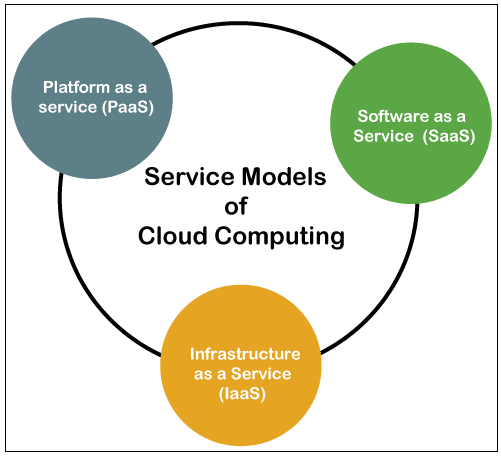#13 CLOUD COMPUTING
What is Cloud computing
Cloud
computing is defined as the use of different resources via Internet access,
such as application development frameworks, storage, servers, as well as other
software.
Cloud service providers have three common features that are described below:
- Services
are flexible
- The
costs of the facilities used, which may involve memory, preparation time,
and bandwidth, must be charged by the user.
- The
back-end of the software is handled by cloud service providers.
Cloud computing Service Models
In terms of market structures, cloud computing systems can be implemented,
which may vary based on particular requirements. Some of the traditional
application services used are briefly listed below. They are-
1. Platform as a service (PaaS)
PaaS enables
consumers to browse platform access, enabling them to implement the software
and cloud implementations. Operating systems or internet connectivity are not
controlled by the user, which can impose some limitations on the software's
scope that can be implemented. Instances include Amazon Web Services,
Rackspace, and Microsoft Azure.
2. Software as a service (SaaS)
In SaaS, the
right to access or use of a cloud-hosted program or service must be purchased
by customers.
3. Infrastructure as a service (IaaS)
In IaaS,
customers can monitor and handle the operating systems, software, network
access, and storage without managing the cloud itself.
Cloud computing Deployment Models
Cloud computing virtualization technologies also rely on prerequisites, just
the same as the deployment model. There are four main types of models, each
having its own features.
1. Community cloud
Cloud-based infrastructure and services enable multiple companies with
similar goals and similar requirements to access a cloud. As an outcome, it is
spread by the various organizations using it; this reduces capital spending
expenditures. These activities may be implemented on-site with a third party.
2. Private Cloud
For particular organizations only, private clouds are deployed, managed, and
controlled.
3. Public Cloud
Public clouds will be used on a subscription basis by the people but are operated
by a company of cloud service. Consequently, without the considerable economic
resources needed for other deployment options, a customer can build and
implement a service.
4. Hybrid cloud
Numerous kinds of clouds comprise of this sort of cloud services. However
such cloud has the ability to enable data and apps to migrate from one domain
to the next. Hybrid clouds may also be a mixture of public and private clouds.
Advantages of Cloud computing
Among the several challenges raised by cloud computing, some advantages of
cloud computing are defined below-
1. Flexibility
Cloud Computing enables businesses to operate with a small cloud
implementation and grow very quickly and effectively. When the situation
requires it, scaled back can also be achieved soon. It also allows businesses,
when appropriate, to add additional resources that help to reach increasing
consumer demands.
2. Consistency
System security and recovery procedures are supported by service providers
using various inefficient webpages.
3. Save expenditure
Once it comes to enhancing the computational capabilities, enterprises can
dramatically reduce their capital and operational spending through cloud
computing.
4. Mobile Accessibility
Mobile connectivity is also supported to a greater degree by cloud
computing.
5. Maintenance
The cloud computing providers often perform maintenance activities.




Comments
Post a Comment